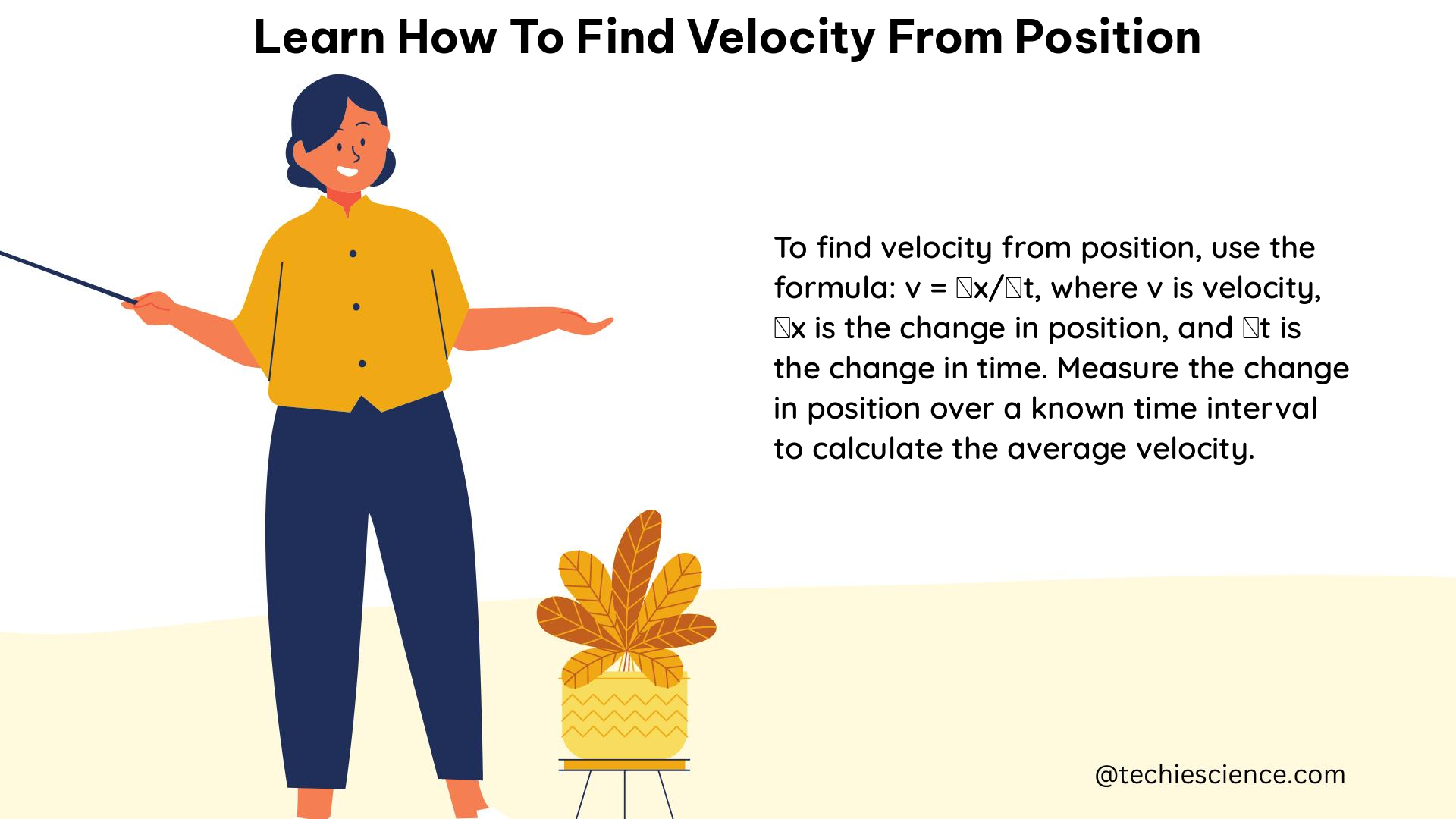Summary
Determining velocity from position is a fundamental concept in physics, which is crucial for understanding the motion of objects. This comprehensive guide will provide you with a step-by-step approach to calculating velocity from position using various methods, including graphical analysis and mathematical formulas. You will also find detailed examples, physics-specific details, and additional resources to help you master this essential skill.
Calculating Velocity from a Position-Time Graph

Splitting the Graph into Intervals
The first step in determining velocity from a position-time graph is to divide the graph into distinct intervals where the object’s behavior changes. These intervals can be identified by the shape of the graph, such as ascending, descending, or horizontal sections.
By splitting the graph into these intervals, you can analyze the slope of each section, which represents the velocity of the object during that time period.
Analyzing the Slope
The slope of the position-time graph directly corresponds to the velocity of the object. A positive slope indicates a positive velocity, a negative slope indicates a negative velocity, and a horizontal line represents zero velocity.
To calculate the slope, you can use the formula:
Slope = (Change in Position) / (Change in Time)
or, in mathematical notation:
Slope = Δx / Δt
where Δx is the change in position and Δt is the change in time.
Describing Velocity Changes
Once you have determined the slopes for each interval, you can describe how the velocity of the object changes throughout the movement. For example, if the slope increases, the velocity is increasing; if the slope decreases, the velocity is decreasing.
By analyzing the changes in slope, you can gain a comprehensive understanding of the object’s motion and how its velocity varies over time.
Calculating Velocity Using Formulas
Average Velocity
To calculate the average velocity of an object, you can use the formula:
v = Δx / Δt
where v is the average velocity, Δx is the change in position, and Δt is the change in time.
This formula allows you to determine the average velocity over a specific time interval, which can be useful for understanding the overall motion of the object.
Instantaneous Velocity
Instantaneous velocity, on the other hand, represents the velocity of the object at a specific point in time. To calculate the instantaneous velocity, you need to find the derivative of the position function with respect to time.
The derivative of the position function, denoted as dx/dt, gives you the instantaneous velocity of the object.
v = dx/dt
This method is particularly useful when the object’s velocity is changing continuously, as it allows you to determine the velocity at any given moment.
Example Calculations
Example 1: Calculating Average Velocity
Suppose a car travels from 5 meters to 41 meters in 8 seconds. To calculate the average velocity, we can use the formula:
v = Δx / Δt
v = (41 - 5) / 8
v = 36 / 8
v = 4.5 m/s
Therefore, the average velocity of the car is 4.5 meters per second.
Example 2: Calculating Displacement
A diver leaps 1 meter straight up and then falls 5 meters. To calculate the displacement, we can use the formula:
Displacement = Δx = 1 - 5 = -4 meters
The negative value indicates that the final position is 4 meters below the starting position.
Additional Resources
Video Tutorials
- “Constructing a Velocity Graph from a Position Graph” by Khan Academy: https://www.youtube.com/watch?v=loQ063jcw1c
- “Finding Position from Velocity – Integration” by The Organic Chemistry Tutor: https://www.youtube.com/watch?v=vPyfE4nf278
Step-by-Step Guides
- “4 Ways to Calculate Velocity” by wikiHow: https://www.wikihow.com/Calculate-Velocity
References
- Serway, R. A., & Jewett, J. W. (2018). Physics for Scientists and Engineers with Modern Physics (10th ed.). Cengage Learning.
- Halliday, D., Resnick, R., & Walker, J. (2013). Fundamentals of Physics (10th ed.). Wiley.
- Young, H. D., & Freedman, R. A. (2016). University Physics with Modern Physics (14th ed.). Pearson.

The lambdageeks.com Core SME Team is a group of experienced subject matter experts from diverse scientific and technical fields including Physics, Chemistry, Technology,Electronics & Electrical Engineering, Automotive, Mechanical Engineering. Our team collaborates to create high-quality, well-researched articles on a wide range of science and technology topics for the lambdageeks.com website.
All Our Senior SME are having more than 7 Years of experience in the respective fields . They are either Working Industry Professionals or assocaited With different Universities. Refer Our Authors Page to get to know About our Core SMEs.